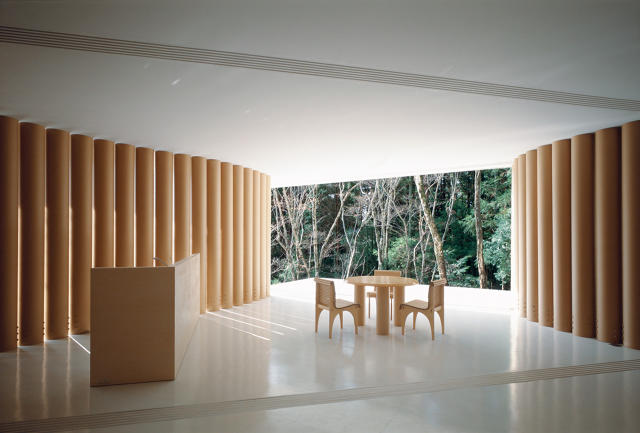Working at a small scale has some surprising benefits.
Eero Saarinen, Zaha Hadid, Norman Foster, Thomas Heatherwick, Walter Gropius, Shigeru Ban, Rem Koolhaas, Frank Gehry: If it seems like every architect of note has also designed a chair, it's because that's pretty much true. Why? In her new book Chairs by Architects (Thames & Hudson), art historian Agata Toromanoff says that chairs afford architects an opportunity to distill their techniques, innovations, and style into a new medium. Importantly, they also serve as a rite of passage.

Chairs by Architects is filled with dozens of examples of chairs laid out side-by-side with pictures of their designers' most iconic buildings. Viewed this way, it's easy to see how a designer's personal style makes the leap from architecture to industrial design. Alvar Aalto's No. 41 lounge chair, for example, was designed for a tuberculosis asylum, so it was made to function in a clean, clinical aesthetic much like the buildings he designed. Richard Meier's Armchair 810, originally designed in 1978 for Knoll, is just as informed by the Modernist vocabulary of proportion, scale, and geometry as the Ara Pacis Museum, which he designed in 2006. The Washington Skeleton and Washington Skin chairs, designed by David Adjaye in 2013, are cantilevered in such a way that they look like they defy gravity, every bit as much as the Skolkovo School of Management he designed in Moscow in 2010. "Designing a chair presents the opportunity to express my position — it is like a testing ground for ideas that interest me, " Adjaye told Toromanoff.
"One of my favorite chairs in the book is the Kuki Chair by Zaha Hadid," Toromanoff says. A limited-edition chair developed in collaboration with Sawaya & Moroni back in 2013, Toromanoff cites it as an example of how an architect's style gets distilled down into his or her chairs. The Kuki Chair is made up of cylindrical sheets of plastic, folded together to resemble a navy blue fortune cookie. As much as any of Hadid's building designs, like her proposed Japanese National Stadium or the City of Dreams Hotel Tower in Macau, it shows the architects obsession with creating unusual facades by folding, crumpling, and bending.

One might assume that chairs provide an easy way for architects to explore a new technique before using it at the architectural scale. That's not why so many architects design chairs, though, Toromanoff says: "Almost everyone I spoke to says that a chair is a way of demonstrating an architect's credentials as a designer to a wider audience." In fact, some architects become more famous for their chairs than their buildings: Charles and Ray Eames, for example. Architects turn to chairs, Tormanoff says, because people can have a more intimate relationship with them than they can with one of their buildings. What, after all, is a chair but a dedicated building for your butt?
[All Photos: courtesy Thames & Hudson]